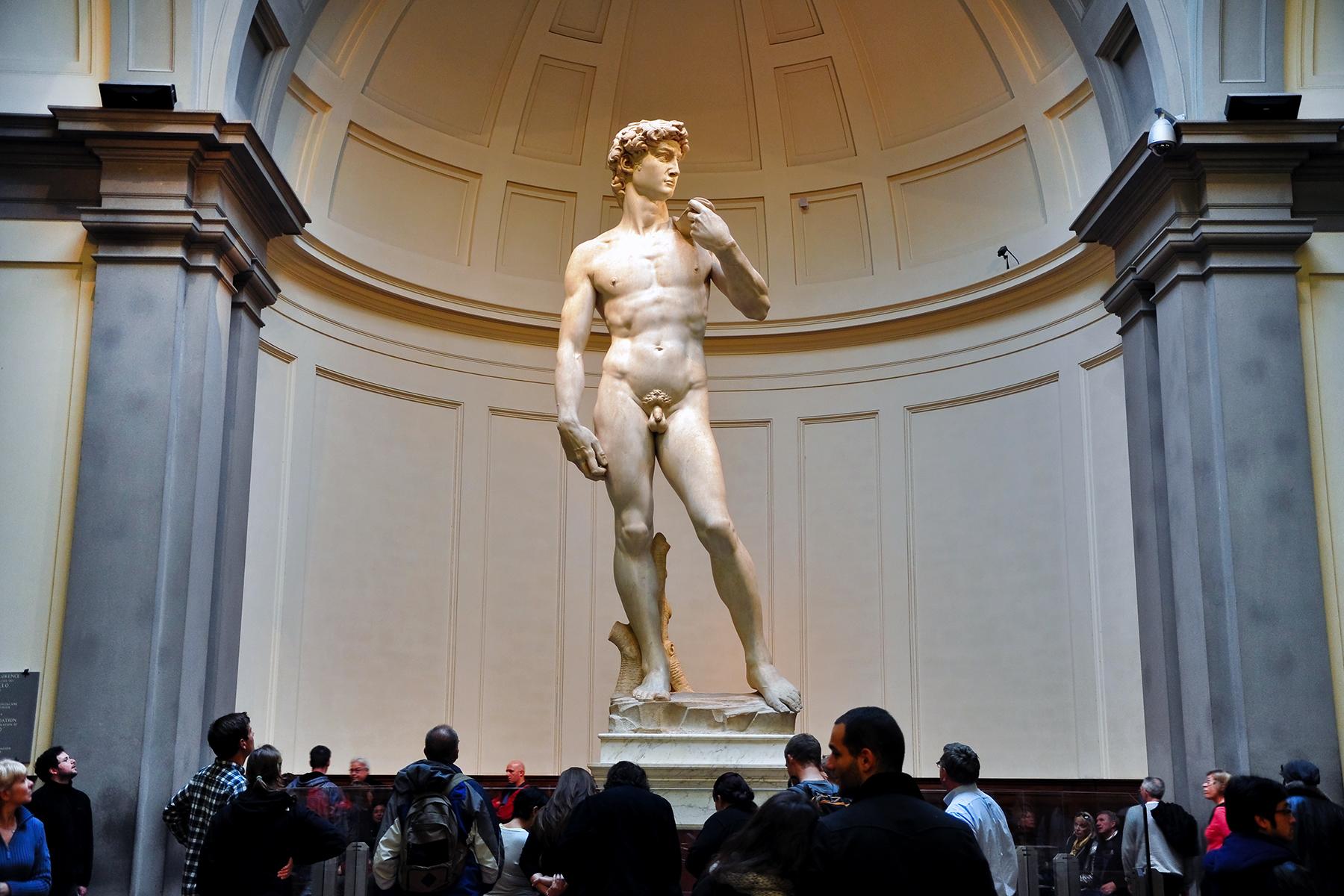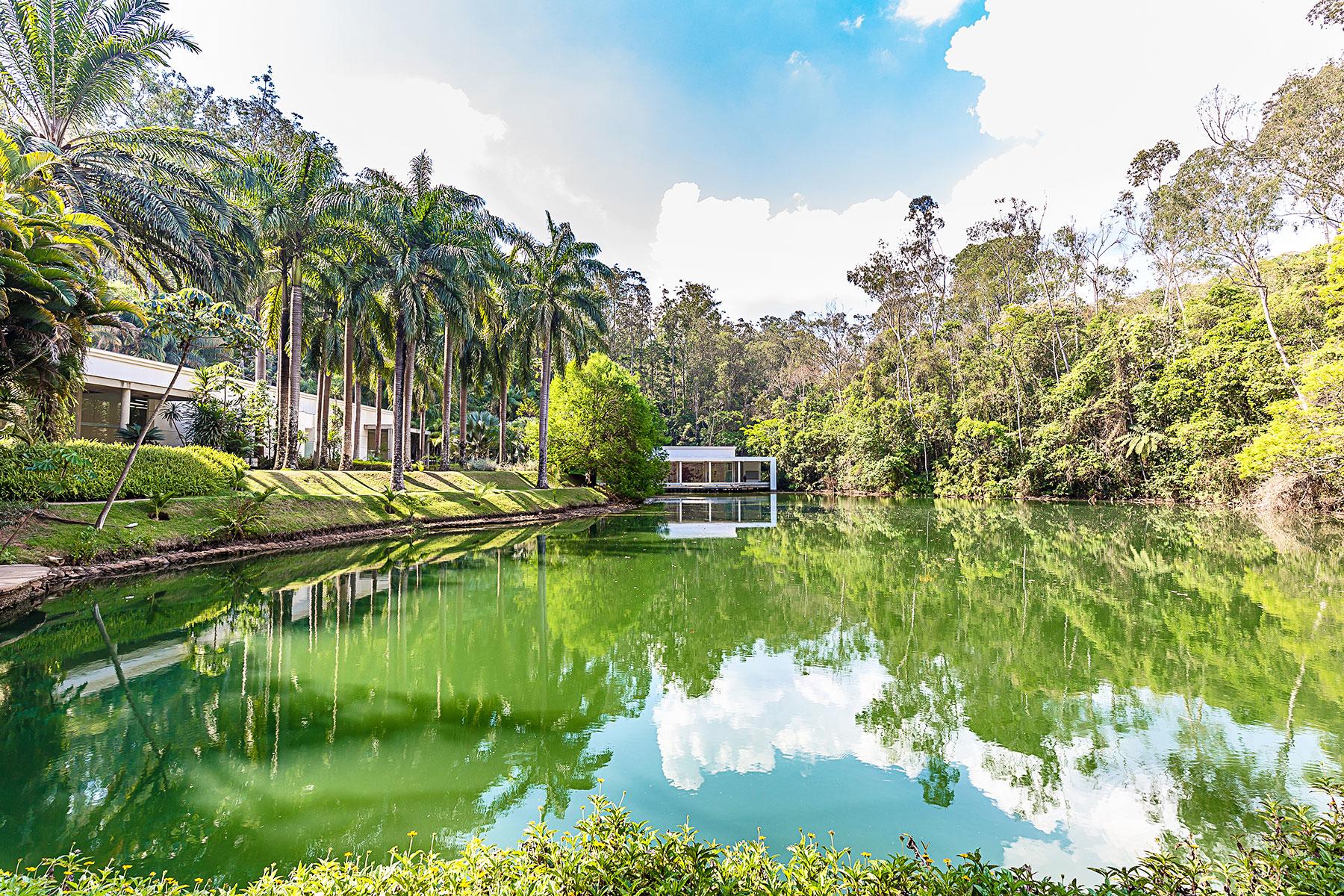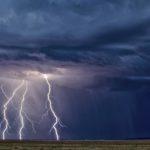This remote art is worth the journey.
Rather than waiting in line for another blockbuster show at a big city museum, go off the beaten path and you might get the artworks all to yourself. Located in some of the world’s most remote places, the journey is the destination to see these artworks; from specialist museums and colossal land art to unique sculptures and installations.
Lightning Field
WHERE: New Mexico
In the high desert of western New Mexico, visiting The Lightning Field, an epic work of land art by Walter de Maria, takes some effort. The exact location is a secret and visits are tightly regulated—you cannot visit independently and you must spend the night there. Make a reservation (far in advance; 2018 is already fully booked) through the Dia Art Foundation, which maintains the site. On the day, you’ll need to make your own way to the town of Quemado (about three hours from Albuquerque) where you’ll check in and be driven around 45 minutes to the site—no you may not drive yourself. A simple cabin awaits, where you are provided with a meal and plenty of time to immerse yourself in the surroundings and the golden light of sunset reflecting off de Maria’s mysterious grid of 400 polished stainless steel poles. Oh, and photography is forbidden so you’ll have to keep the memory to yourself, not Instagram.
INSIDER TIPWhile lightning is not required to enjoy the work, thunder-and-lightning storms are most common from July to mid-September, creating spectacular flashes.
The Silo Art Trail
WHERE: Australia
For more than 50 years, towering grain silos have dominated the arid landscape of the Wimmera Mallee region; the so-called “wild west” of Victoria, Australia. Once a symbol of the region’s agricultural industries, the silos later came to represent rural decay as people moved away and the silos were abandoned. Now, the Silo Art Trail, touted as “the world’s largest outdoor gallery,” is re-energizing the area. The project was initiated by the street artist Guido Van Helten, who, in 2015, painted his “Farmer Quartet,” four photorealist figures, across four 1939-built silos in the town of Brim. The work’s widespread attention inspired the establishment of the trail, which now counts six artworks spread across 125 miles of sunbaked outback. From Melbourne, it’s a three-and-a-half hour drive inland to the Rupanyup Silo by Julia Volchkova. From there it’s around 20 to 30 minutes between each of the rest.
Recommended Fodor’s Video
Vardø
WHERE: Norway
Scenic Route Varanger, one of Norway’s 18 designated national tourist routes, winds one hundred miles through some of the country’s starkest Arctic landscapes. Driving through Finnmark, from Varangerbotn to Hamningberg, you end up in the northernmost wrinkles of the Norwegian coastline, where the land stretches into the Barents Sea and brushes against Russia to the east. Along the way, you will come across the Steilneset Memorial in the small town of Vardø.
A collaboration between the artist Louise Bourgeois and architect Peter Zumthor, the memorial commemorates the 91 people who were burned at the stake as a result of the 17th-century Finnmark witch trials. As befits a site of such historical weight, the memorial is stark and contemplative. Zumthor’s long hallway is lit by 91 bulbs, each next to a small text detailing biographical information about each of the victims, and leads to a glass box, inside which sits Bourgeois’ installation: a circle of mirrors surrounding a burning steel chair.
INSIDER TIPMake some time to explore the colorful street artworks of Vardø, the result of Komafest, a street art festival held there a few years ago.
Fogo Island
WHERE: Canada
On the remote eastern edge of Canada, overlooking the North Atlantic, Fogo Island is an otherworldly setting of colorful clapboard houses and storm-battered coastline. Little wonder, then, that an increasing number of artists make the long journey (it’s a 2.5-hour drive and ferry ride from the nearest commercial airport, Gander) to find inspiration and help re-energize this small fishing community. Since 2010 the residency-based contemporary art venue Fogo Island Arts has brought more than 100 artists to the island. For up to three months they live and work in modern, beautifully designed artist studios and some are invited to show their work at the Fogo Island Gallery located inside the sleek Fogo Island Inn.
INSIDER TIPa work of modernist art in itself, Fogo Island Inn’s furnishings and textiles are made by local artisans.
Nimis
WHERE: Sweden
In 1980, the artist Lars Vilks built his unsanctioned 15-story-high wooden sculpture Nimis and stone sculpture Arx in the Kullaberg nature reserve in north-west Skåne, Sweden. A couple of years later the local council discovered the sculptures and ordered them destroyed. In response, Vilks declared the sculptures’ site to be within his newly created micronation of Ladonia.
From the town of Mölle, off Sweden’s coastal highway 111, drive 2.5 miles to Kullaberg Nature Reserve. The trail to Nimis begins at the old red barn named Himmelstorp. Follow yellow arrows and “N”s painted on tree trunks and fences into the forest and over steep and uneven terrain. The walk should take around 40 minutes—although the signs are so sparsely spread out that is quite easy to get lost.
INSIDER TIPYou can become a citizen of Ladonia by simply filling out an application form.
Marfa
WHERE: Texas
Given that it’s been Tumbl’d by Beyoncé and Instagrammed near to death, the art-focused Texas city of Marfa is hardly off the map. It still takes some effort to get there, though. Unless you have access to your own plane, it’s a three hour drive from the nearest airport to downtown Marfa where, among a number of gallery spaces (testament to the many artists who make their home here) you’ll find the Chinati Foundation, founded by late Marfa resident, the minimalist artist Donald Judd. No trip is complete without a stop at Prada Marfa, the art installation by Elmgreen & Dragset that has become a symbol of the city, but visitors can also see a new site-specific installation. The ancient megalith-inspired Stone Circle by Haroon Mirza will be on view in the high desert grasslands east of Marfa for the next five years.
Svalbard
WHERE: Norway
At a latitude of 78 degrees north, Kunsthall Svalbard claims the title of the world’s northernmost exhibition space. The contemporary arts center is an outpost of the Northern Norway Art Museum (600 miles south in the city of Tromsø) and located in the small town of Longyearbyen on the island of Spitsbergen in Norway’s Svalbard archipelago. This far-flung location is perhaps an unexpected place to find a thriving arts scene, but, as the island’s economy moves away from coal mining and the world’s attention turns to the Arctic and its frontline position to see the effects of climate change, cultural institutions are making their mark. While visiting, art lovers can also check out the Artica Svalbard Foundation, which promotes culture via an artist-in-residence program and a public program of talks and workshops, as well as the private exhibition space Galleri Svalbard.
INSIDER TIPThe Global Seed Vault is world renowned as a secure seed bank, meant to protect against crop loss in the event of global catastrophe. But it is also home to a light installation but the artist Dyveke Sanne.
Teshima
WHERE: Japan
The Instagram-readiness of Yayoi Kusama’s unforgettable pumpkin sculptures has put the Seto Inland Sea island of Naoshima firmly on the map. But if you are planning a visit, don’t miss the opportunity to make an additional trip across the water to the neighboring “art island” of Teshima, which, together with a dozen other islands hosts the Setouchi Triennial. Here you can immerse yourself in the absolute minimalism of Teshima Art Museum, a collaboration between the artist Rei Naito and architect Ryue Nishizawato, the space is designed to resemble a single drop of water. Afterward, walk through woods, past crumbling old houses and moored fishing boats to find Christian Boltanski’s Les Archives du Cœur. Housed in a small wooden building, Boltanski’s work is an audio archive of people’s heartbeats from around the world, which makes for haunting listening alone in the isolated building.
Bodega Colomé
WHERE: Argentina
At 9,000 feet above sea level, Bodega Colomé is home to not only one of the highest vineyards in the world, but also the world’s only museum dedicated to the light artist James Turrell. Located in the Calchaquí Valley in Salta, getting to Bodega Colomé requires a long journey across deserts and dirt roads. Once there, you’ll have the rare opportunity to enjoy Turrell’s hypnotic works in peace, including the largest of his signature “sky spaces,” enclosed chambers open to the sky through an aperture in the roof.
INSIDER TIPThere’s a nine-room hotel if you want to spend the night, and, of course, all the wine you can drink.
Sun Tunnels
WHERE: Utah
One of the few women associated with the male-dominated form of land art, Nancy Holt said that the idea for her Sun Tunnels—a work made up four huge concrete cylinders—came “in the desert watching the sun rising and setting, keeping the time of the earth. Sun Tunnels can exist only in that particular place—the work evolved out of its site.” That site is in a remote valley in the Great Basin Desert, outside the ghost town of Lucin, Utah, west of the Bonneville Salt Flats. The cylinders are arranged in a cross and aligned to frame the sun at sunrise and sunset during the summer and winter solstice and are pierced with smaller holes representing the stars of four constellations: Draco, Perseus, Columba, and Capricorn.
Inhotim Art Park
WHERE: Brazil
The sprawling sculpture park of Inhotim is set over 5,000 acres of rural countryside 40 miles from Belo Horizonte in Brazil’s southwestern state of Minas Gerais. Wandering through the lush landscape, past emerald-green lakes and at the top of steep hills, you’ll come across, as if by accident, sculptures and installations by some of the art world’s biggest names, including Yayoi Kusama, Olafur Eliasson, Doris Salcedo, and Anish Kapoor. However, with around 5,000 flora species, your attention may be focused more on the gardens than the art.
Molinere Underwater Sculpture Park
WHERE: Grenada
It doesn’t get much more remote than the bottom of the sea and, although granted, this does not require Deepsea Challenger level diving, you at least need to snorkel into the Caribbean Sea to view Jason de Caires Taylor’s sculpture park. On the sandy floor of Molinere Bay, Grenada, 65 concrete sculptures (life casts of local community members) are arranged to function as both artworks and an artificial reef that attracts a variety of marine life. Constructed in 2006, it was the first of three underwater sculpture parks de Caires Taylor has created—the others are in Cancún, Mexico, and Lanzarote, Spain.





